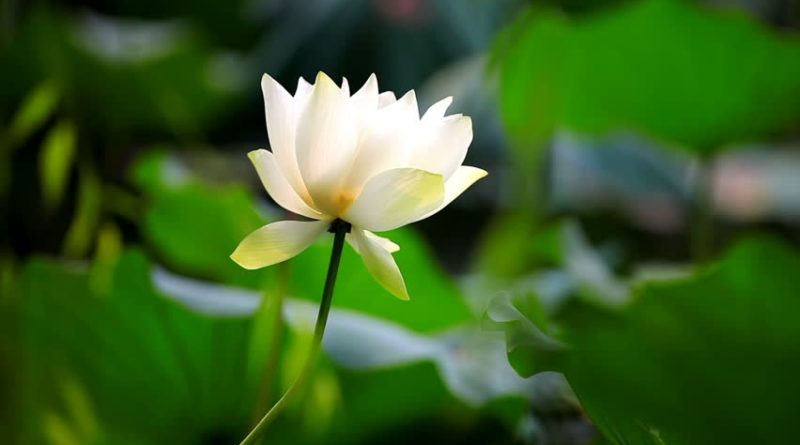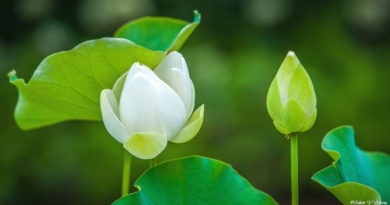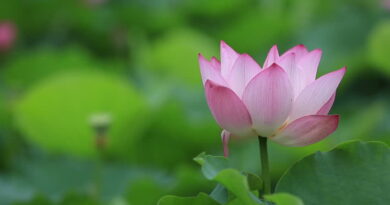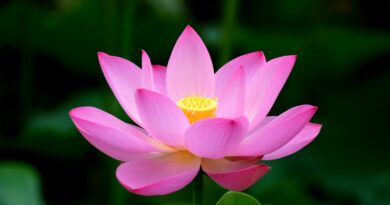Going For Refuge & Taking The Precepts – The Existence Of A Refuge – Ii. Bhikkhu Bodhi
II. The Existence of a Refuge
To realize that the human situation impels the search for a refuge is a necessary condition for taking refuge, but is not in itself a sufficient condition. To go for refuge we must also become convinced that an effective refuge actually exists. But before we can decide on the existence of a refuge we first have to determine for ourselves exactly what a refuge is.
The dictionary defines “refuge” as a shelter or protection from danger and distress, a person or place giving such protection, and an expedient used to obtain such protection. This tallies with the explanation of the Pali word sarana, meaning “refuge”, which has come down in the Pali commentaries. The commentaries gloss the word sarana with another word meaning “to crush” (himsati), explaining that “when people have gone for refuge, then by that very going for refuge it crushes, dispels, removes, and stops their fear, anguish, suffering, risk of unhappy rebirth and defilement.”[1]
These explanations suggest two essential qualifications of a refuge. (1) First, a refuge must be itself beyond danger and distress. A person or thing subject to danger is not secure in itself, and thus cannot give security to others. Only what is beyond fear and danger can be confidently relied upon for protection. (2) Second, the purported refuge must be accessible to us. A state beyond fear and danger that is inaccessible is irrelevant to our concerns and thus cannot function as a refuge. In order for something to serve as a refuge it must be approachable, capable of giving protection from danger.
From this abstract determination of the qualifications of a refuge we can return to the concrete question at hand. Does there exist a refuge able to give protection from the three types of dangers delineated above: from anxiety, frustration, sorrow and distress in the present life; from the risk of an unhappy destination after death; and from continued transmigration in samsara? The task of working out an answer to this question has to be approached cautiously. We must recognize at once that an objectively verifiable, publicly demonstrable answer cannot be given. The existence of a refuge, or the specification of a particular refuge, cannot be proven logically in an irrefutable manner binding on all. The most that can be done is to adduce cogent grounds for believing that certain persons or objects possess the qualifications of a refuge. The rest depends upon faith, a confidence born out of trust, at least until that initial assent is transformed into knowledge by means of direct experience. But even then the verification remains inward and personal, a matter of subjective appropriation rather than of logical proof or objective demonstration.
From the Buddhist perspective there are three refuges which together make available complete protection from danger and distress. These three are the Buddha, the Dhamma, and the Sangha. The three are not separate refuges each sufficient in itself; rather they are interrelated members of a single effective refuge which divides into three by way of a distinction in the characteristics and functions of its members. Why such a distinction is necessary becomes clear if we consider the order in which the three are presented.
The Buddha comes first because he is a person. Since we are persons we naturally look to another person for guidance, inspiration, and direction. When it is ultimate deliverance that is at stake, what we look for in the first place is a person who has himself reached complete freedom from danger and can lead us to the same state of safety. This is the Buddha, the enlightened one, who comes first in the triad for the reason that he is the person who discovers, achieves, and proclaims the state of refuge. In the second place we need that state of refuge itself, the state beyond fear and danger; then we need a path leading to this goal; and also we need a set of instructions guiding us along the path. This is the Dhamma, which as we will see has this threefold denotation. Then, in the third place, we need persons who began like ourselves — as ordinary people troubled by afflictions — and by following the way taught by the guide reached the state of safety beyond fear and danger. This is the Sangha, the community of spiritual persons who have entered the path, realized the goal, and can now teach the path to others.
Within the triad each member works in harmony with the other two to make the means of deliverance available and effective. The Buddha serves as the indicator of refuge. He is not a savior who can bestow salvation through the agency of his person. Salvation or deliverance depends upon us, upon our own vigor and dedication in the practice of the teaching. The Buddha is primarily a teacher, an expounder of the path, who points out the way we ourselves must tread with our own energy and intelligence. The Dhamma is the actual refuge. As the goal of the teaching the Dhamma is the state of security free from danger; as the path it is the means for arriving at the goal; and as the verbal teaching it is the body of instructions describing the way to practice the path. But to make effective use of the means at our disposal we need the help of others who are familiar with the path. Those who know the path make up the Sangha, the helpers in finding refuge, the union of spiritual friends who can lead us to our own attainment of the path.
This triadic structure of the three refuges can be understood with the aid of a simple analogy. If we are ill and want to get well we need a doctor to diagnose our illness and prescribe a remedy; we need medicine to cure our illness; and we need attendants to look after our requirements. The doctor and attendants cannot cure us. The most they can do for us is to give us the right medicine and make sure that we take it. The medicine is the actual remedy which restores our health. Similarly, when seeking relief from suffering and distress, we rely on the Buddha as the physician who can find out the cause of our illness and show us the way to get well; we rely on the Dhamma as the medicine which cures our afflictions; and we rely on the Sangha as the attendants who will help us take the medicine. To get well we have to take the medicine. We can’t just sit back and expect the doctor to cure us all by himself. In the same way, to find deliverance from suffering, we have to practice the Dhamma, for the Dhamma is the actual refuge which leads to the state of deliverance.









